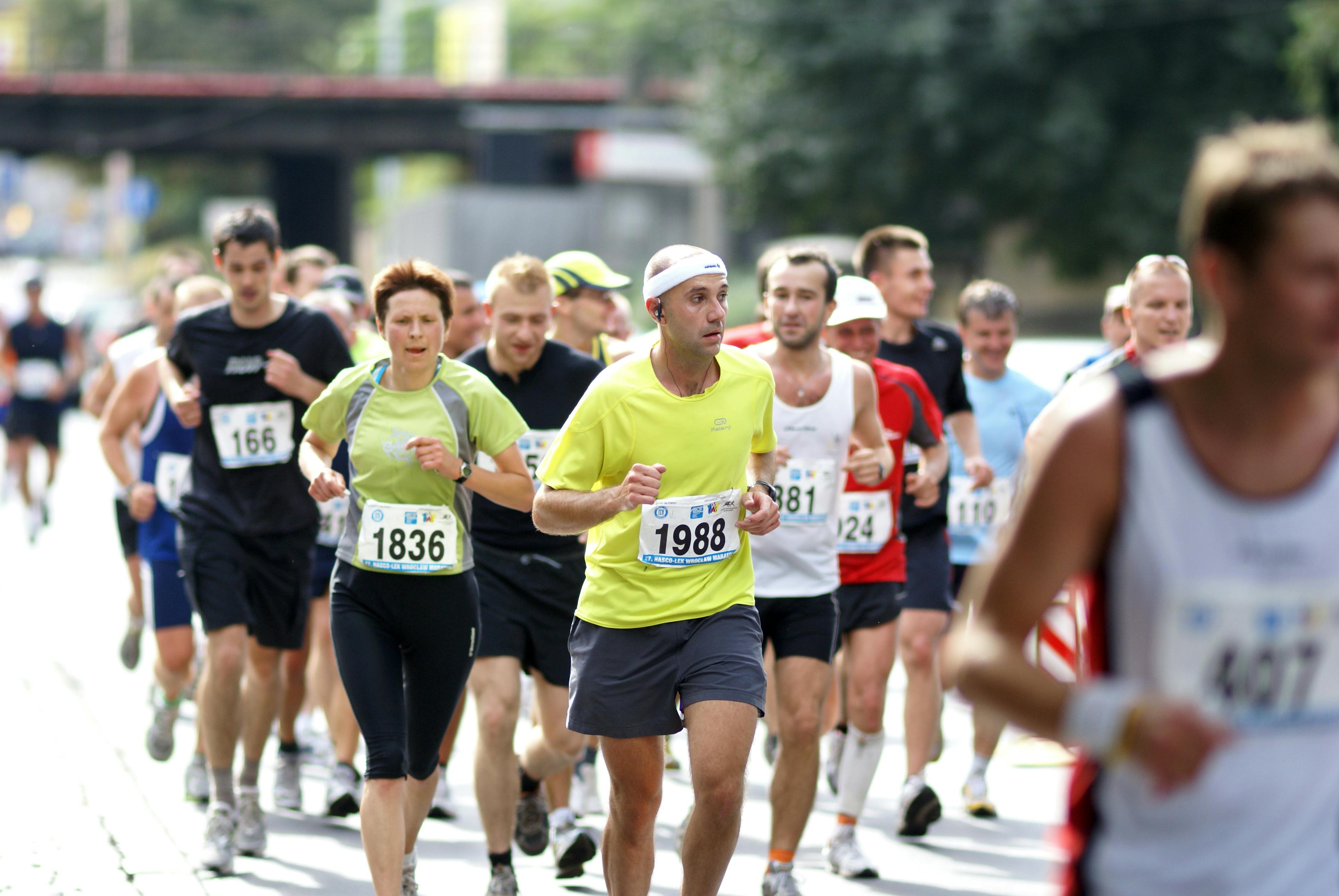
**Title: The Undeniable Benefits of Sports Participation for All Ages**
The physical health benefits of regular sports participation
Regular participation in sports offers a wide array of physical health benefits that contribute significantly to overall well-being. Engaging in physical activities helps improve cardiovascular health by strengthening the heart and enhancing circulation. This leads to better oxygen delivery throughout the body, reducing the risk of heart disease and stroke. Additionally, frequent exercise lowers blood pressure and helps maintain healthy cholesterol levels, further promoting heart health.Sports can also be an effective way to manage body weight. Regular physical activity burns calories, which is essential for weight loss and maintenance. It enhances metabolism, making it easier to control body composition by decreasing excess fat while increasing lean muscle mass. Maintaining a healthy weight is crucial for reducing the risk of various health conditions, including type 2 diabetes and certain types of cancer.
Another significant benefit is improved bone health. Weight-bearing exercises help strengthen bones and improve bone density, which is vital for preventing osteoporosis as individuals age. Engaging in activities like running, basketball, or tennis can significantly increase bone strength and reduce the likelihood of fractures.
Flexibility, balance, and coordination are also enhanced through regular sports participation. Different sports require varying levels of these attributes, aiding in injury prevention and improving performance in daily activities. This becomes particularly important as people age–maintaining these physical capabilities is essential for a high-quality life.
Furthermore, participating in sports contributes to muscle strength and endurance. Activities like swimming, cycling, or practicing martial arts help build muscle mass and enhance strength over time. Not only does this contribute to a more toned appearance, but stronger muscles are also crucial for better mobility and reducing the risk of injuries.
Engaging in sports can boost immune function. Regular moderate-intensity exercise has been shown to enhance the immune system's efficacy by encouraging healthy circulation and improving overall metabolic functions. This can lead to fewer illnesses and quicker recovery times when sickness occurs.
In addition to these physical benefits, regular sports participation also fosters social interactions, teamwork, and communication skills that can enhance mental wellness. Balancing improved mental health with physical advantages results in a holistically beneficial experience.
To sum it all up, partaking in sports regularly is incredibly advantageous for physical health. From enhancing cardiovascular fitness to building muscle strength, improving flexibility, maintaining a healthy weight, supporting bone integrity, and even boosting immune support—there are countless reasons to engage in sports. Embracing an active lifestyle opens the door not only to personal achievements but also leads toward overall improved health and quality of life.
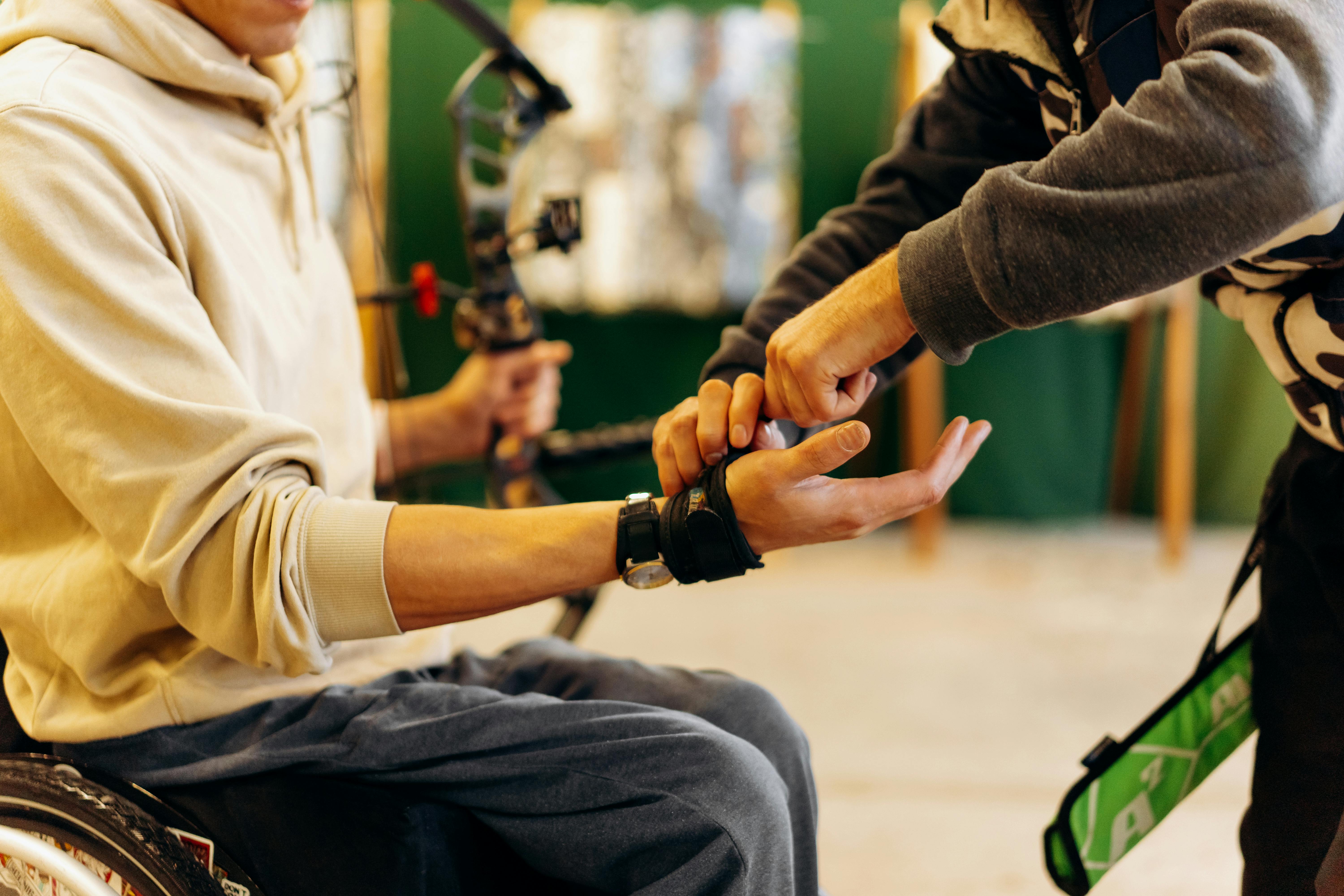
How sports foster mental well-being and resilience
sports play a significant role in fostering mental well-being and resilience. Engaging in physical activities can have profound effects on an individual's mental health, providing both psychological and emotional benefits. One key aspect of participation in sports is the release of endorphins, often referred to as "feel-good" hormones. When individuals engage in exercise, their brain produces these chemicals, leading to improved mood and reduced feelings of stress or anxiety.Moreover, sports can serve as a valuable outlet for expressing emotions. Whether it’s celebrating a victory or coping with defeat, sports offer a structured environment where individuals can manifest their feelings. This process can help participants learn to manage emotions more effectively, contributing to greater emotional intelligence over time.
In addition to emotional benefits, sports encourage social interaction. Being part of a team or joining a community of fellow athletes fosters connections and friendships. These social ties are essential for building support networks that can help individuals navigate the ups and downs of life. The camaraderie developed through shared experiences in sports often leads to improved self-esteem and a sense of belonging—both crucial components of mental well-being.
Moreover, participating in sports helps promote discipline and goal-setting skills. Athletes learn to set objectives, work towards them, and push through challenges alike. This process fosters resilience as individuals encounter setbacks and learn to view failure not as a stop sign but as part of the journey toward personal growth. Each time an athlete trains or competes, they build mental toughness—a resilience that transcends sports and can be applied to various life situations.
Engagement in regular physical activity through sports can also provide structure in individuals’ lives. This organized routine brings inherent benefits by reducing feelings of chaos or unpredictability, leading to increased stability. For many people, having this structure can alleviate symptoms of anxiety and promote overall wellbeing.
Mindfulness is another aspect often linked with sports that contributes to mental health benefits. Engaging in activities like yoga or martial arts emphasizes breathing techniques and present-moment awareness which can significantly reduce stress levels and encourage mental clarity.
It's also important to consider the cognitive benefits of participation in sports. Many studies indicate that regular physical activity improves cognitive functions such as focus, memory, and problem-solving skills. Through practice and competition, athletes regularly utilize strategic thinking and decision-making processes that are beneficial off the field as well.
Finally, inclusivity in sports can enhance mental well-being by allowing individuals from varied backgrounds and abilities to participate together. Adaptive sports initiatives enable those with disabilities to engage in athletic pursuits, further promoting self-confidence and community integration.
In summary, the interplay between sports, mental well-being, and resilience is substantial. Through physical activity, emotional expression, social connection, discipline, goal setting, mindfulness, cognitive development, and inclusivity—sports pave pathways to healthier minds and stronger spirits fostered by perseverance and participation.

The role of team sports in developing social skills and friendships
Team sports play a significant role in developing social skills and fostering friendships among participants of all ages. When individuals join a team, they become part of a community united by a common goal, which is usually to succeed in competition. This collaborative environment encourages communication, cooperation, and understanding among teammates.One of the primary ways team sports enhance social skills is by promoting teamwork. Players learn to work with one another, balancing different personalities and skills for a shared objective. They develop crucial abilities such as active listening, conflict resolution, and leadership – qualities that are not only vital on the sports field but also transferable to other areas of life, including school, work, and personal relationships.
In addition to teamwork, players in team sports often form lasting friendships. Spending time together during practices and games fosters trust and camaraderie. Teammates celebrate each other’s successes and support one another during challenging moments. These shared experiences help forge deep connections, which can lead to friendships that endure well beyond the playing field.
Moreover, participating in team sports provides opportunities for individuals to meet new people. This diversity can expose players to different cultures and backgrounds, helping them develop empathy and appreciation for others. Such exposure can enhance their ability to engage in social settings both within and outside the sport.
The competitive nature of team sports also teaches valuable lessons about handling wins and losses with grace. Athletes learn the importance of humility in victory and resilience in defeat. These experiences help them build emotional intelligence, as they learn to process their feelings in a supportive environment.
Furthermore, team sports can cultivate a sense of belonging and identity. For many individuals, being part of a team offers them a niche within their community where they can feel accepted and valued. This poise contributes significantly to an individual’s self-esteem.
Finally, engaging in team sports helps create networks that extend beyond just athletic activities. Many friendships formed on the field lead to social gatherings outside the sport, enriching the lives of participants with shared interests.
In summary, team sports serve as an excellent vehicle for developing social skills and building friendships. By encouraging cooperation, encouraging diversity among participants, enhancing emotional intelligence, and creating deep bonds through shared experiences, team sports leave an indelible impact on individual development that lasts well into adulthood. Everyone involved benefits from skills in communication, collaboration, and personal interaction – traits essential for thriving in society both on and off the field.
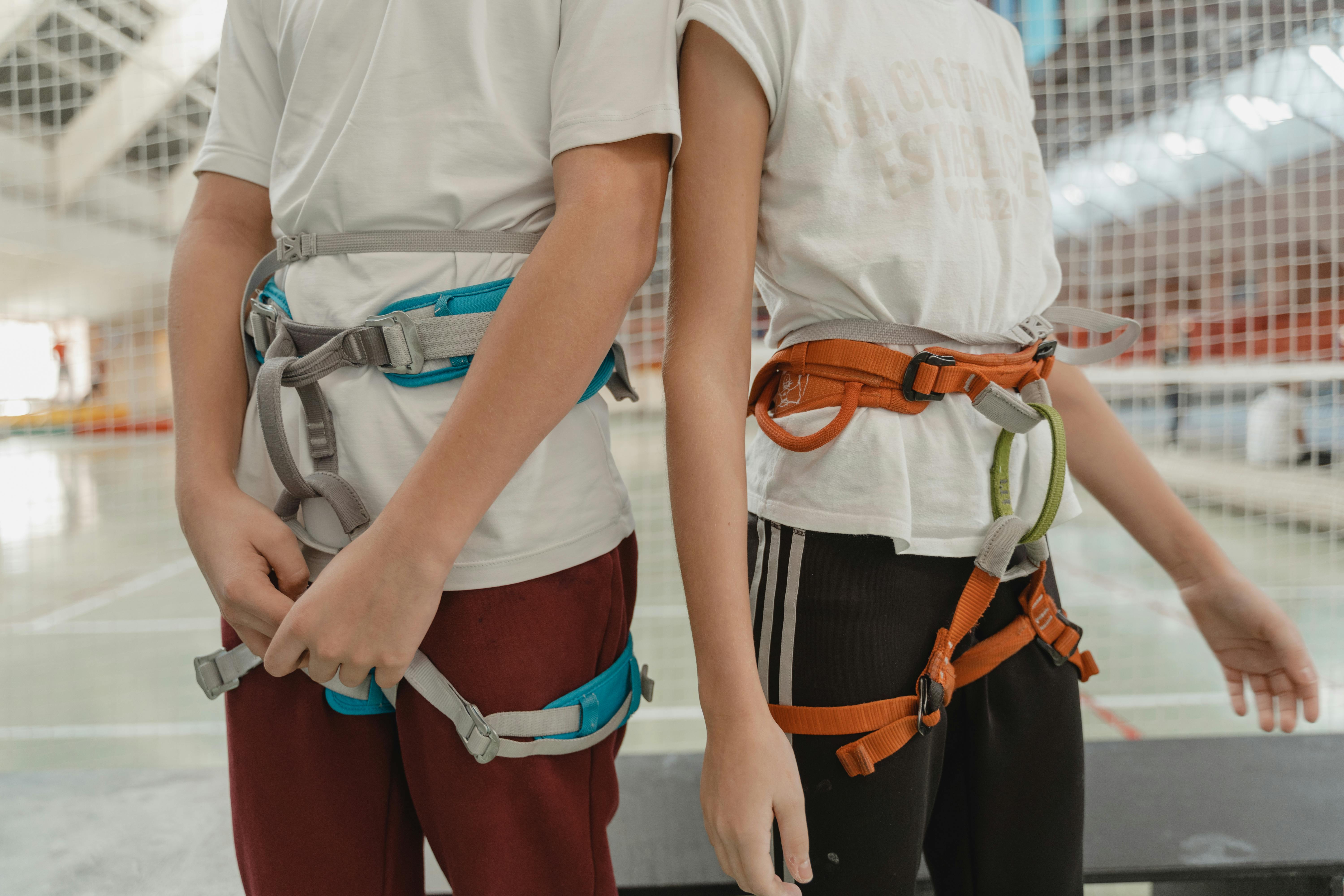
Sports as a means for promoting inclusivity across all ages
sports serve as a powerful platform for promoting inclusivity across all ages and backgrounds. They provide an environment where individuals can come together, regardless of their differences, and bond over a shared passion for competition and teamwork. The beauty of sports lies in their ability to transcend barriers related to age, gender, ethnicity, and socio-economic status.For young people, engaging in sports teaches important life skills such as cooperation, respect, and empathy. These experiences help them understand the significance of inclusivity and how teamwork can lead to achieving common goals, regardless of individual capabilities or differences. This foundational understanding fosters an inclusive mentality as they grow older.
Adults also benefit greatly from participating in sports. Many community leagues offer programs that bring people of all ages together, encouraging friendships and connections. These settings create opportunities for mentorship between younger and older athletes. Additionally, workplaces have increasingly recognized the value of team sports to enhance morale and build stronger teams across various departments and age groups.
Moreover, adaptive sports are instrumental in promoting inclusivity for individuals with disabilities. These sports provide a modified environment that accommodates diverse needs while allowing players to experience competition and camaraderie. Organizations dedicated to adaptive sports break down stereotypes by showcasing the incredible abilities of athletes with disabilities and inspiring everyone toward greater acceptance.
The role of technology in sports cannot be overstated either. Advances in virtual participation, such as e-sports, widen access for everybody, allowing those unable to engage in physical activities due to age constraints or health issues to join in on competitive environments from home.
In conclusion, through recreational leagues, school programs, and community events, sports become avenues beyond mere competition. They forge communities where understanding and respect are paramount. By manifesting a culture of inclusivity across various age groups through sporting activities, we not only enhance the experience of each participant but also lay the groundwork for a more connected society. As we embrace the values within sports, we can learn essential lessons about inclusion that echo far beyond the fields or courts where games are played.

Exploring adaptive sports for individuals with disabilities
Adaptive sports play a significant role in promoting physical activity, social inclusion, and overall well-being for individuals with disabilities. The essence of adaptive sports lies in their ability to modify standard sports equipment and rules, making them accessible for participants with varying abilities and disabilities. These sports offer not just a competitive outlet, but also an opportunity for personal growth, community engagement, and empowerment.The origins of adaptive sports can be traced back to post-World War II when there was a need to rebuild the lives of injured veterans. Since then, the movement has expanded tremendously, encompassing a variety of sports that accommodate different types of disabilities, including physical, visual, and intellectual impairments. Exemplifying this growth is the establishment of parasports, categorized as competitive sports for athletes with physical disabilities. Events like the Paralympic Games celebrate these athletes on an international platform.
Adaptive sports have adapted just about every sport imaginable—from skiing and snowboarding to basketball and rugby—ensuring participation across the board. Innovations in technology have led to specialized gear that enhances performance while catering to individual needs. For instance, wheelchair basketball permits athletes who use wheelchairs to engage fully in the game without any compromise on competitiveness or excitement. Moreover, visually impaired athletes benefit from auditory clues in sports like goalball or tandem cycling.
Another critical aspect of adaptive sports is their ability to foster community relationships and build social skills. These activities encourage teamwork, resilience, and communication, making them invaluable in educational settings and local communities. Many organizations dedicate themselves to supporting adaptive sporting programs. Their initiatives often include providing training resources, hosting competitions, and facilitating social gatherings that steer focus toward inclusion.
Participation in adaptive sports does more than provide a source of entertainment; it significantly contributes to an individual's mental health and emotional stability. Regular physical activity can mitigate feelings of anxiety and depression while boosting self-esteem. Individuals discover new friendships, experience a sense of belonging among peers like themselves, and gain confidence through achievement.
Many barriers still exist for individuals looking to engage in adaptive sports. Often tied to location accessibility, financial costs for specialized equipment or participation fees can hinder people from joining these activities. Advocacy for more inclusive environments in venues or public spaces—which are common challenges—continues.
Education is key to fostering growth within the adaptive sports community. Raising awareness about these opportunities both inspires potential athletes and encourages broader society to embrace diversity in sporting contexts. Events at schools often help bring these topics into discussion alongside physical education programs genuinely inclusive of all students.
In conclusion, exploring adaptive sports reveals a world rich with benefits for individuals with disabilities. As technology evolves and awareness grows, we can expect further innovations that allow even greater chances for participation. Adaptive sports highlight human resilience while fostering community bonds—reminding everyone that sports are meant for all.

The cognitive benefits of participating in sports for children and seniors
Participating in sports offers a myriad of cognitive benefits for both children and seniors, significantly enhancing their mental performance and overall well-being. For children, engaging in sports contributes to critical skill development. It improves concentration and focus as they learn to follow instructions, understand strategies, and keep track of different aspects of a game. This enhanced focus can translate into better performance in school, helping them to absorb information more effectively.Physical activity through sports also promotes the development of neurons in the brain, supporting improved memory retention and learning capabilities. Regular engagement in sports can boost self-esteem and confidence, further nurturing an optimistic mindset that positively affects cognitive functioning. In addition, team sports foster social interaction and communication skills; children learn to collaborate with peers, which is vital for cognitive development and emotional intelligence.
For seniors, participation in sports plays an equally significant role in cognitive health. Physical activity goes beyond maintaining physical fitness; it helps combat cognitive decline that can occur with aging. Engaging in regular sports activities stimulates the brain by promoting blood flow and development of new neural connections. This can guard against conditions such as dementia and Alzheimer's disease.
Sports also encourage social engagement among seniors. This social aspect not only enhances emotional health but also facilitates mental stimulation through conversation, teamwork, and shared goals. Moreover, participating in sports provides structure to a senior's routine, anchoring them within a community while encouraging goal-setting and continued learning—even later in life.
In both age groups, the benefits extend into creating resilience and coping mechanisms. Sports teach valuable lessons about success and failure, allowing individuals to develop grit and persistence—traits crucial for cognitive resilience. From developing strategic thinking in younger players to honing quick decision-making skills among seniors during play, the impact on cognition is profound.
Overall, the integration of sports into daily routines for children and seniors enriches their cognitive abilities while enhancing physical health and emotional stability. The bridging of mind-body connections through sports serves as a foundation for lifelong physical activity, fostering enduring cognitive benefits that contribute to an individual’s quality of life at any age.
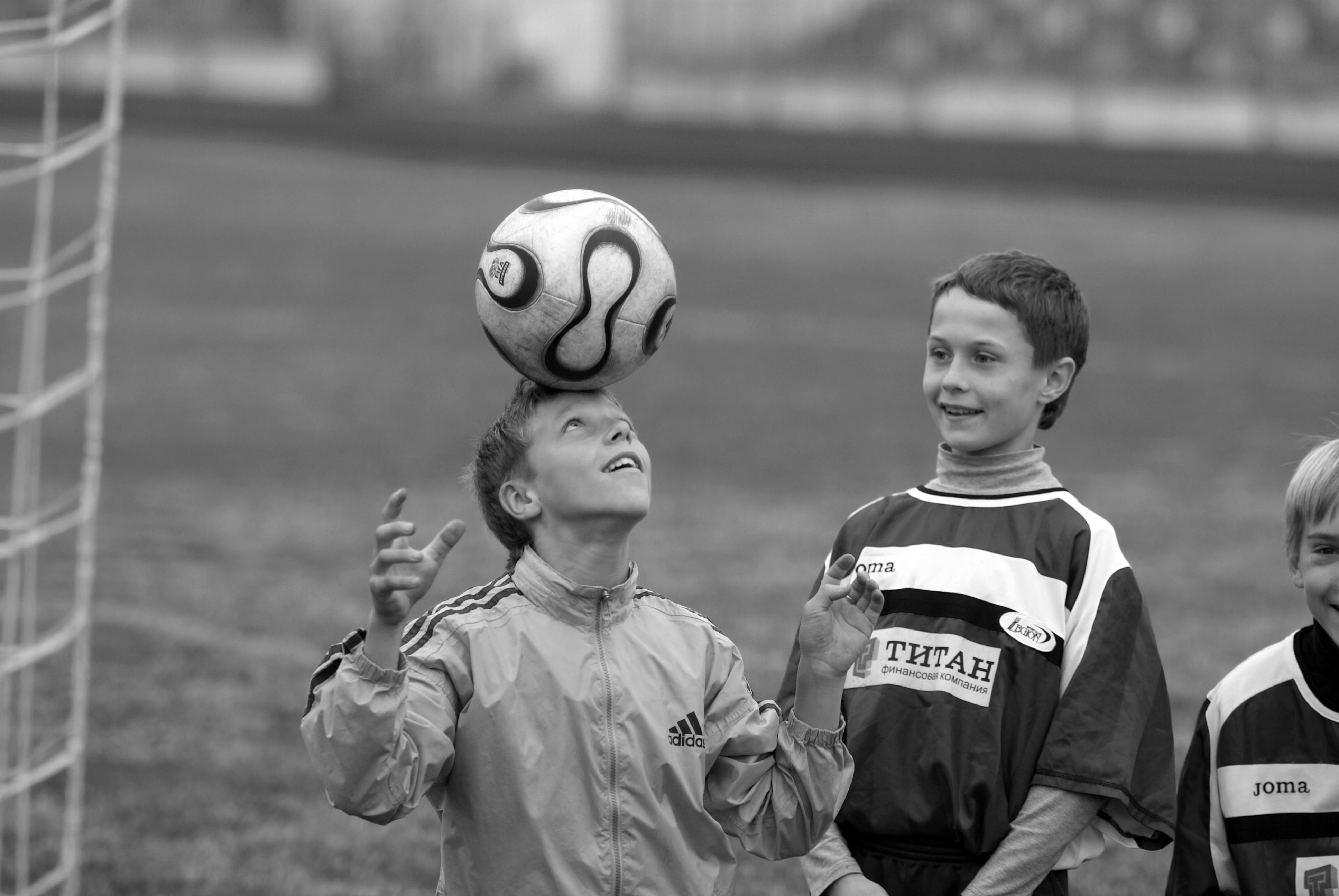
How parents can encourage lifelong sports participation in their children
Encouraging lifelong sports participation in children is a rewarding journey for parents that supports not only physical health but also emotional and social development. The right approach can instill a love of movement and fitness that lasts a lifetime.It begins with creating a positive early exposure to sports and physical activity. Parents can introduce their children to various sports at a young age, allowing them to explore different options. This exploration fosters an enthusiasm for movement and helps kids discover what they enjoy most, whether it's soccer, swimming, basketball, or dance. Variety is key as it prevents monotony and burnout while building skills in diverse areas.
Avoiding pressure is crucial in this process. Children often withdraw from activities when they feel overwhelmed by expectations, whether academic or athletic. Therefore, keeping the experience fun and low-stress encourages them to continue participating willingly. Parents should focus on celebrating effort rather than winning, emphasizing personal growth rather than competition.
Incorporating family-friendly activity into daily routines can reinforce the value of an active lifestyle. Parents might choose to engage in physical activities as a family, such as biking, hiking, or playing catch in the backyard. These shared experiences bond families together while promoting the idea that physical activity is a regular part of life and something to enjoy together.
Parents are powerful role models, so demonstrating an active lifestyle plays a pivotal role. When children see their parents actively participating in sports and valuing fitness, they are more inclined to mirror those behaviors. Regular participation in community sports or fitness classes showcases a positive attitude towards being active.
Involvement in sports doesn't always have to come from structured environments; informal play is equally impactful. Encouraging children to play freely with friends outside promotes creativity and enjoyment in sports without societal pressures. Unstructured play is essential for developing physical abilities as well as social skills.
As children grow and become more responsible for their participation choices, supporting them in exploring organized sports will be key. Parents should back children's interests, regardless of the sport's popularity or competitiveness. Engaging with coaches or being present at games while respecting the child’s autonomy contributes positively to their motivations.
Equally important is instilling resilience and understanding setbacks. Sports often involve challenges like losing games or facing tough competition. Teaching children how to cope with disappointment and encouraging them to try again helps them develop a healthy perspective on perseverance that extends beyond sports.
Lastly, staying informed about age-appropriate athletic programs aids parents in steering their children’s involvement constructively. Ensuring that organizations prioritize safety, inclusivity, and skill development will cultivate enriching experiences suited for young athletes clearly.
In conclusion, by fostering an enjoyable atmosphere around sports participation, setting the stage where activity feels instinctive rather than obligatory, and being an example of an active lifestyle, parents can help lay the foundation for their children’s lifelong engagement with sports.

The impact of community sports programs on local health and wellness
Community sports programs play a significant role in enhancing local health and wellness. They foster physical activity, promote social interaction, and contribute to mental well-being. One of the most immediate impacts of such programs is the boost they provide to participants' physical fitness levels. Regular participation in sports activities helps combat obesity, heart disease, and other health-related issues. Moreover, community sports offer accessible opportunities for exercise without the barriers associated with commercial fitness facilities.Participation in community sports also encourages positive lifestyle choices. By engaging in regular physical activity, individuals are more likely to adopt healthier eating habits and maintain better overall well-being. This promotion of active living dovetails with public health initiatives aimed at reducing chronic diseases within communities.
Socially, these programs create a sense of belonging and community pride. Sports can bridge divides among people from different backgrounds, fostering inclusivity and unity within neighborhoods. Participants often form strong bonds through teamwork and shared experiences, which can reduce feelings of isolation or anxiety and enhance mental health.
Furthermore, community sports programs often emphasize education regarding healthy living and wellness practices. Many initiatives incorporate workshops or informational sessions about nutrition, injury prevention, and stress management. Such knowledge empowers community members to take charge of their health beyond the sporting field.
Local economies can also benefit from active sports communities. Vibrant sporting events can stimulate local businesses and increase community engagement through tournaments and competitions that draw spectators and participants alike.
Initiatives that prioritize youth involvement not only nurture tomorrow's athletes but also lay the groundwork for lifelong healthy habits. Early engagement with sports instills values such as teamwork, discipline, and goal-setting, playing a pivotal role in personal development.
In summary, community sports programs have a multifaceted impact on local health and wellness. They encourage physical activity while nurturing social connections and promoting educational health initiatives. Ultimately, they lay the foundation for healthier, more cohesive communities where individuals can thrive both physically and mentally.

Sports and lifelong learning: Skills gained beyond the playing field
sports and lifelong learning go hand in hand in remarkable ways. Participating in sports often teaches players valuable life skills that extend well beyond the playing field and into their everyday lives. From teamwork and discipline to time management and resilience, the lessons learned through athletic endeavors significantly contribute to personal development.One of the most prominent skills gained from playing sports is teamwork. Athletes learn how to work cohesively with others towards a common goal, which is a vital skill in both professional and personal relationships. The understanding that collaboration can yield better results often translates into effective communication and conflict resolution strategies.
Discipline is another cornerstone skill cultivated through athletics. Commitment to regular practice, adhering to training schedules, and striving for improvement are habits fostered in sports. This discipline sets a foundation for achieving goals across various domains of life, instilling a strong work ethic that can lead to success in academics and career pursuits.
Time management is yet another critical competency that emerges from being active in sports. Athletes juggle practices, games, schoolwork, and possibly part-time jobs. This balancing act teaches them how to prioritize tasks and find time for multiple responsibilities—a challenge they handle with growing complexity as they progress through different life stages.
Moreover, resilience is often built through encounters with both triumphs and setbacks in sports. Dealing with losses—whether it's a missed game-winning shot or not qualifying for an event—teaches athletes how to bounce back, an essential attribute in facing life's challenges. Learning how to cope with disappointment while staying focused on future objectives grants players an unyielding mindset applicable beyond athletics.
Additionally, sports provide networking opportunities that enhance personal growth and professional prospects. Creating lifelong friendships with teammates, coaches, and opponents fosters connections that could open doors down the line, whether it’s for mentorship opportunities or future business collaborations.
Leadership skills are also honed through sports participation. Many athletes take on roles as team captains or mentors to younger players, offering guidance and support. This experience nurtures a sense of responsibility and empowers individuals to step into leadership positions outside of sport settings.
Finally, the value of health and fitness becomes ingrained in athletes' mindsets. Understanding the importance of maintaining a healthy lifestyle encourages lifelong habits of physical activity, nutrition, and overall wellness—a benefit that impacts longevity positively.
In conclusion, the skills developed through sports participation are immensely beneficial beyond the playing field. Through lessons on teamwork, discipline, time management, resilience, networking, leadership, and health awareness, athletes build a toolkit invaluable for navigating the diverse challenges of life. This makes sports not just an avenue for physical excellence but a powerful platform for lifelong learning that shapes well-rounded individuals armed for success in many aspects of life.
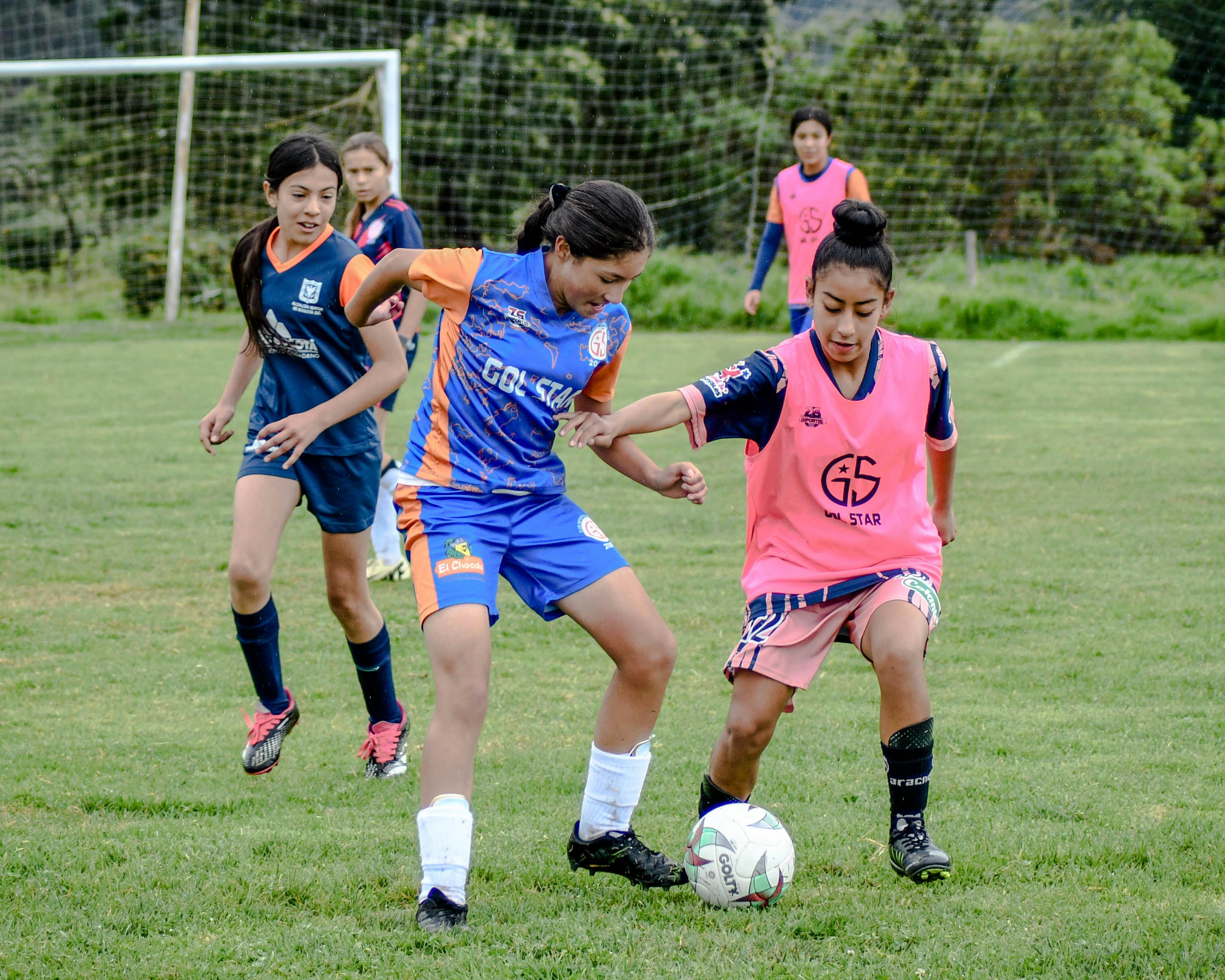
Testimonials from athletes of various ages about their experiences in sports
Testimonials from athletes offer a unique and powerful lens into the world of sports, highlighting the diverse experiences that span across ages and levels of competition. These narratives encapsulate the emotional highs and lows, personal growth, and community spirit tied to athletic pursuits.Athletes, regardless of age, often speak about how sports have shaped their identities and life paths. For young athletes, engaging in sports can instill discipline, teamwork, and resilience at an early age. Many share stories of their early experiences on the field or court, recalling how a supportive coach or a significant victory reinforced their passion for the game. It’s common to see youth athletes mentioning the friendships formed through teamwork and the joy derived simply from playing.
As athletes progress into their teenage years and early adulthood, many begin to articulate the balance between sports and academics or career pressures. They express the thrill of competition but also touch upon the mental strain and emotional challenges that can accompany high expectations. Testimonials often highlight pivotal moments—whether overcoming an injury, experiencing a major loss, or achieving a longstanding goal—that shaped their athletes’ perspectives not just on sports, but also on life.
For older and retired athletes, testimonials become more reflective. They often convey a profound appreciation for both the journey within their sports careers and the connections fostered with teammates, coaches, and fans. Many retirees continue to advocate for youth participation in sports as they brush past nostalgic memories while pointing out how organized athletics have transformed not only their lives but those of countless others around them. Their voices are instrumental in inspiring new generations to embrace sports as an avenue for personal development and community engagement.
Across different sporting disciplines—from soccer to gymnastics to track and field—the common thread is the impact that sports have on fostering resilience, camaraderie, and a sense of purpose among individuals from various backgrounds. Athletes often recount how their involvement in sport builds character traits like accountability and perseverance that carry over into other life challenges beyond athletics.
In conclusion, testimonials present a rich tapestry of voices that resonates across generations. They serve not only as affirmation of the value of sports engagement but also as motivation for future athletes facing their own hurdles. As we celebrate these diverse narratives, it becomes clear that through all ages and levels of sport participation, stories unite us in the universal quest for growth, understanding, and achievement.

The evolution of sports programs for elderly participants
reflects a growing recognition of the importance of physical activity for maintaining health and well-being as people age. Historically, traditional perceptions of aging prioritized inactivity and rest for older adults, often viewing them as incapable of engaging in vigorous exercise or organized sports. However, over recent decades, this perspective has undergone significant transformation.In the late 20th century, research began to highlight the myriad benefits of exercise for older individuals, including improved mobility, enhanced mental health, reduced risk of chronic diseases, and increased longevity. This understanding prompted healthcare professionals, community organizations, and fitness advocates to design programs specifically tailored to the needs of seniors.
Today’s sports programs for the elderly are versatile and often incorporate a holistic approach that addresses physical fitness alongside social interaction and cognitive engagement. Activities range from moderate exercises such as tai chi and water aerobics to more traditional team sports adapted for safety and accessibility. These programs frequently provide modifications to ensure that participants of varied fitness levels can safely join in.
Local community centers, retirement communities, and recreational facilities increasingly offer organized leagues and classes focused on activities like senior softball, walking clubs, chair yoga, and even competitive events like the Senior Olympics. Such opportunities not only cater to physical health but also foster social connections among participants, combatting feelings of isolation that can come with aging.
Furthermore, technology has begun to play a role in engaging elderly participants in sports. Online platforms offering virtual classes or live-streamed events make it easier to access fitness resources from home. Fitness apps designed with the older population in mind emphasize gentle workouts and tracking physical accomplishments without the competitive pressures characteristic of younger demographics.
Understanding accessibility is crucial as well. Innovative adaptations ensure sports equipment accommodates various mobility limitations, while programs trained staff to create supportive environments fostering inclusivity. Whether it’s ensuring that fields are easily accessible or providing transportation services for those with mobility challenges, thoughtful planning assists in breaking down barriers.
Looking ahead, the trend toward promoting active lifestyles among the elderly continues to gain momentum. With an emphasis on healthy aging becoming more prominent in public health policies and wellness initiatives, future developments will likely see an expansion in offerings, targeted education on the benefits of exercise in seniors' health programming, and increasing investments in facilities designed specifically with older adults in mind.
Ultimately, the evolution of sports programs for elderly participants represents an empowering shift in societal attitudes towards aging—celebrating vitality and promoting a lifelong commitment to health through activity. By recognizing older adults as vibrant members of their communities who continue to engage fully with life through sports and recreation, we nurture a culture that values physical health at all stages of life.

Strategies for overcoming common barriers to sports participation at different life stages
Overcoming barriers to sports participation is essential for fostering a healthy and active lifestyle across all age groups. Various obstacles can impede individuals from engaging in physical activities at different stages of life, but understanding and addressing these challenges can help promote a commitment to sport and exercise.At the childhood stage, common barriers include a lack of time, inadequate facilities, or limited opportunities for participation. To tackle these issues, it's vital for parents, schools, and communities to create inclusive environments that prioritize youth sports. Encouraging children through positive reinforcement, offering a variety of sports options, and ensuring accessibility to facilities can promote interest and participation. Varsity squads, local leagues, and after-school programs can also provide structured opportunities for kids to engage in sports while fostering social connections.
As adolescents transition into adulthood, the focus shifts to barriers such as increased responsibilities related to school, work, and social life. Mental health issues may also arise during this stage. It’s important to create flexible opportunities for participation that fit into busy schedules. Significantly promoting casual or unstructured games can encourage participation without the pressure of organized competition. Additionally, education about the mental and physical health benefits of regular exercise can serve as motivation during this tumultuous period.
For adults, barriers often include time constraints due to family obligations or demanding jobs. Making a commitment to schedule workouts just as anyone would any other important activity can be key. Prioritizing quality time with friends or family by participating in group sports or community fitness classes not only combats the isolation often felt during adult years but can also enhance motivation through social support.
As individuals age into their late adulthood years, physical limitations or fears of injury become more prominent barriers. It is crucial to highlight adaptive sports and low-impact activities tailored to seniors’ capabilities. Fostering a culture that promotes lifelong engagement in physical activities ensures older adults know they can remain active safely. Programs designed specifically for seniors can focus on functional fitness benefits while also providing essential social interactions that contribute positively to mental well-being.
Throughout all these life stages, strong community support plays a central role in overcoming barriers to sports participation. Communities should strive to establish safe spaces where everyone can partake freely in sporting activities without stigmatization—whether it’s through park renovations featuring courts or fields, affordable access to gym facilities, or regular fine-tuning of local sports programs to meet community interests.
Furthermore, enhancing awareness about available resources such as active transport options—including walking or cycling where feasible—can benefit participants across all ages by relieving some of the pressures associated with crowds at gyms or fields. Emphasizing preventive health measures and wellbeing provide everyone with an incentive not only to get involved but also to stay consistently engaged in sports-friendly lifestyles.
In summary, overcoming barriers to sports participation requires tailored strategies that consider the unique needs at different life stages. By cultivating supportive environments within families and communities while offering varied opportunities for engagement that meet individuals' demands—whether it be time-or ability-related—more people can experience the numerous benefits that regular physical activity brings to all aspects of life.
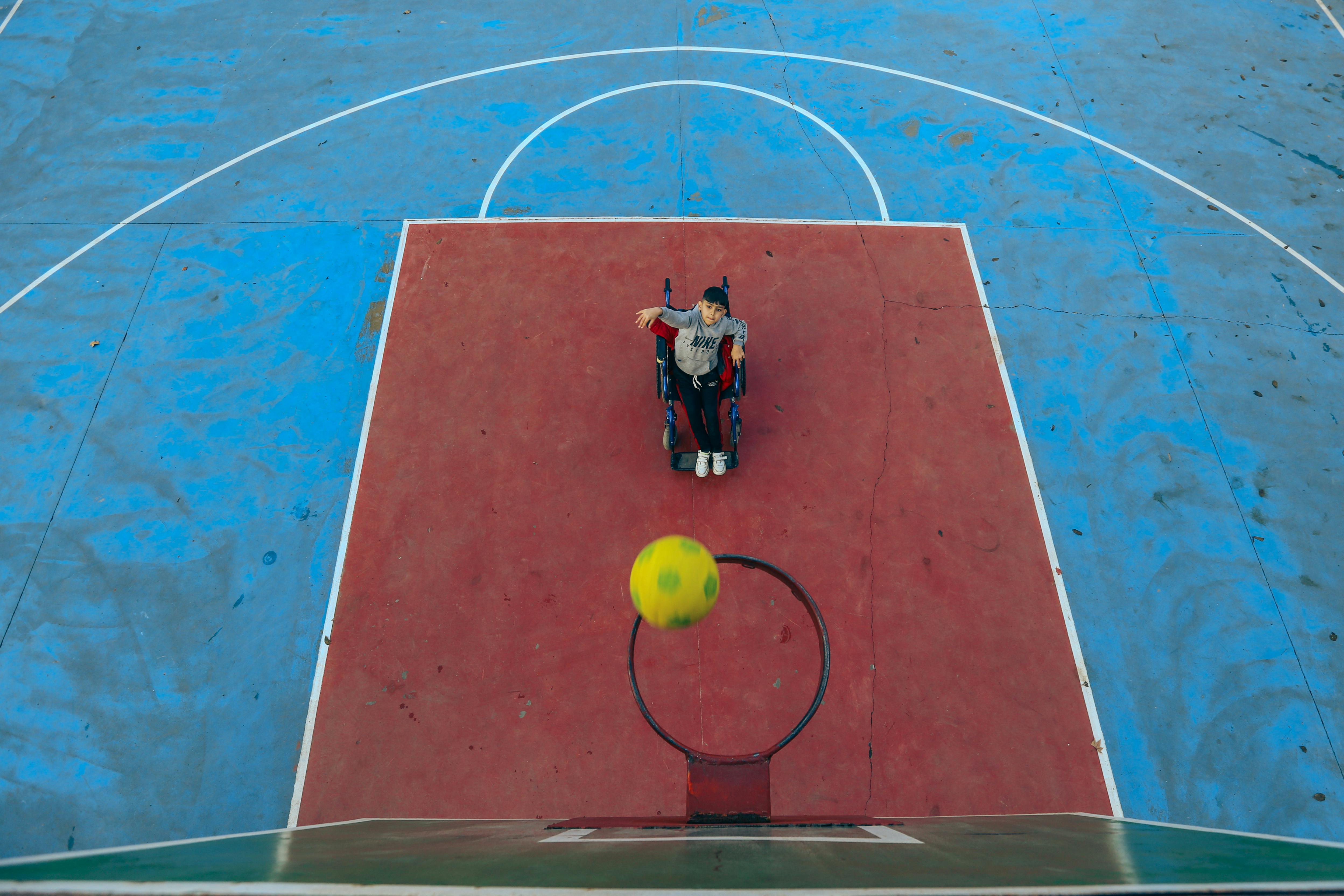
The influence of technology on sports engagement among different age groups
The influence of technology on sports engagement has dramatically transformed the way various age groups interact with the world of sports. In today's digital age, technology plays a crucial role in enhancing the overall experience, enabling personalized engagement, and fostering community connections.For younger generations, particularly millennials and Gen Z, technology is integral to how they consume sports. The rise of social media platforms, streaming services, and mobile applications has changed the landscape of sports entertainment. Young fans are increasingly likely to follow their favorite teams and athletes on platforms such as Instagram, Twitter, and TikTok, where they seek highlights, behind-the-scenes content, and real-time updates. These platforms allow for direct interactions with athletes and clubs, creating a more immersive experience that bridges the gap between fans and their idols.
Augmented reality (AR) and virtual reality (VR) have also gained traction among younger audiences. These technologies enable fans to enjoy unique experiences like virtual stadium tours or interactive player simulations, bringing them closer to the sport they love. E-sports, a rapidly growing sector within the industry, has found a home in technology-rich environments where young people engage competitively or casually in digitally simulated sports.
In contrast, older generations may show different patterns of engagement with technology in sports. While they may not be as enthusiastic about emerging social media trends or e-sports, many have increasingly adopted digital platforms for viewing games. Television networks now offer streaming services that cater to their needs for convenience. Many seniors appreciate live broadcasts through apps and websites or highlight reels delivered via email notifications.
Moreover, some older sports fans value traditional forms of engagement but can become more connected through technology when it simplifies their experience. Online ticket purchasing, reminders for upcoming games via mobile apps or calendars, and chances to watch matches without struggling with cable subscriptions enable convenient access to their favorite sports.
Interestingly, fantasy sports leagues bring together different generations. Older participants join alongside younger fans in drafting teams and following player performances online. This shared interest often leads to familial and peer bonding over their teams' success or failure throughout a season.
Wearable technology is another innovative force that influences engagement dynamics across age groups. Fitness trackers and smartwatches allow people of all ages to monitor their physical activity levels, encouraging healthier lifestyles through sports participation—whether that's running marathons or simply hitting the gym.
As technology continues evolving, its role in creating engaging experiences tailored to diverse audience preferences will likely deepen. Enhanced interaction features like asynchronous content sharing, community chat rooms for discussions around fan events involving both players and followers—even live polling during matches—have already begun reshaping how fans feel included without being physically present at games.
In summary, the influence of technology on sports engagement cuts across age demographics but manifests distinctly according to preferences and familiarity with innovation. Younger cohorts might seek constant connection through social media while older individuals find supremacy in accessibility tailored by technology architectures allowing visits from home comfort zones. Understanding these nuances is crucial for sports organizations aiming to strengthen ties with supporters from multiple backgrounds while navigating an ever-evolving landscape.

How schools can prioritize physical education to enhance student outcomes
Physical education (PE) is a crucial component of a well-rounded education that significantly impacts students' physical, mental, and social well-being. Schools looking to prioritize physical education can implement several strategies to enhance student outcomes. By doing so, they can help students lead healthier lives, improve academic performance, and foster important life skills.One of the key ways schools can prioritize PE is by integrating it into the daily schedule. Rather than treating physical education as an ancillary class, it should be viewed as essential to fostering overall student health. Schools can ensure that students receive ample opportunities to engage in physical activity throughout the day by incorporating short movement breaks into classroom learning or scheduling regular active playtime during recess.
In addition, providing diverse and inclusive PE programs is critical for engaging all students. Schools should offer a variety of physical activities, from traditional team sports to non-competitive options like dance or yoga. This broadening of choices caters to students with varying interests and abilities, ensuring that everyone has a way to get moving and benefit from physical exercise.
Investing in high-quality facilities and equipment is also essential for enhancing PE programs. Well-maintained gymnasiums, sports fields, and outdoor spaces can motivate students to participate more actively. Additionally, having modern and varied equipment allows educators to introduce new activities that may appeal to different student interests and encourage participation.
Teacher training plays another pivotal role in effective PE programming. Schools should provide teachers with ongoing professional development related not only to physical education methodologies but also to the important connections between physical activity and academic learning. Educators who understand these links can more effectively advocate for quality PE experiences within their institutions.
Schools should also emphasize the importance of health literacy as part of their PE curriculum. Teaching students about nutrition, fitness principles, and lifelong health habits equips them with the knowledge needed to make informed choices about their well-being beyond school. This holistic approach instills a sense of personal responsibility for their health.
To create a supportive environment that prioritizes physical education, schools can engage parents and the community. Some strategies may include hosting family days focused on physical activities or collaborating with local sports clubs to offer extracurricular opportunities for all age groups. When families value physical activities, children are more likely to embrace an active lifestyle.
Finally, fostering a positive culture around fitness and teamwork in schools can encourage student participation in PE classes. Celebrating achievements and promoting teamwork can boost motivation and encourage collaboration among peers. Creating an inclusive atmosphere where every student feels welcome will lead to enhanced participation rates while developing crucial social and emotional skills.
By prioritizing physical education through thoughtful integration of active time, diverse program offerings, investment in facilities, continual teacher training, a focus on health literacy, community engagement, and the cultivation of positive culture regarding physical activity, schools can greatly influence student's health outcomes both now and in the future. Empowering students through robust PE curricula supports not only their physical development but also contributes significantly to their academic success and overall quality of life.

The importance of role models in driving youth participation in sports
cannot be overstated. Role models can come in various forms, including professional athletes, coaches, and even parents who demonstrate a commitment to physical activity and teamwork. These figures serve as powerful examples for young people, influencing their attitudes and motivations about participating in sports.One key factor is that role models can inspire youth by showcasing the benefits of sports participation. Young people often look up to athletes who have achieved success through hard work and dedication. When they see their idols excelling in sports, it can ignite a passion within them, encouraging them to take part in activities themselves. Success stories of famous athletes overcoming adversity resonate deeply with young audiences, showing them that perseverance and determination can lead to achievement.
Additionally, role models can create a sense of belonging and community among youth participants. When young athletes interact with influential figures—whether through organized clinics, community events, or social media—they feel more connected to the sport. This connection often enhances their experience and enjoyment of athletic activities, fostering a positive environment where they are more likely to continue participating.
Moreover, role models play an essential role in shaping the values associated with sportsmanship. They teach young participants critical lessons on discipline, teamwork, respect, and resilience. A coach who emphasizes fair play or a professional athlete who exemplifies humility can have profound effects on how youths perceive competition and collaboration with peers. Learning these values early on helps youth develop not only as athletes but also as responsible citizens.
Furthermore, representation matters greatly in sports. Young people from diverse backgrounds benefit from seeing individuals they can relate to succeeding in athletics. When athletes from various racial, cultural, and socioeconomic backgrounds rise to prominence, it sends a message that anyone can thrive in sports regardless of their starting point. This inclusivity encourages more kids to engage in physical activities because they feel seen and valued within the sporting community.
Finally, the influence of modern technology cannot be overlooked. Today's youth often connect with role models through social media platforms where athletes share their journeys, challenges, and victories. These interactions humanize successful figures and make them more approachable. The ability to follow a favorite athlete’s workouts or day-to-day life can motivate young people to engage in physical activity by making it relatable.
In summary, role models play a crucial role in encouraging youth participation in sports by inspiring confidence, fostering a sense of community, instilling important values, promoting representation, and utilizing technology as a means of connection. Their impact extends beyond just the field; they help shape the attitudes and behaviors of tomorrow's generation toward health and fitness. By highlighting the significance of role models in sports, we can strive to create an environment that not only promotes athletic involvement but also supports holistic development for our youth.
